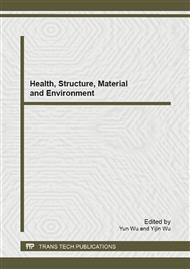p.858
p.863
p.870
p.876
p.882
p.888
p.894
p.899
p.905
Heavy Metal Distribution Inflected by Baishui Reclamation in Luoyuan Bay
Abstract:
According to the features of Luoyuan Bay, such as the complex terrain, flexural coastline and the large area of tidal flat, well-known 3-D hydrodynamic moving-boundary numerical model FVCOM based on unstructured mesh is used to simulate this area. Based on this model, the tidal current field and tide-induced Eulerian residual current field of Luoyuan Bay can be obtained. The concentrations of 4 heavy metals were determined in 8 water bodies in Luoyuan Bay by an inductively coupled plasma mass spectroscopy (ICP-MS). The average concentrations of Cu, As, Cd and Pb are 3.92, 4.22, 0.201 and 5.27 μg/L, respectively. The results manifest that average levels of heavy metals in the vicinity of the reclamation project has increased significantly in recent years. According to the simulated hydrodynamic results analysis, the water power intensity weakens near the reclamation project with a residual current reducing water exchange capacity.
Info:
Periodical:
Pages:
882-887
Citation:
Online since:
February 2013
Authors:
Keywords:
Price:
Сopyright:
© 2013 Trans Tech Publications Ltd. All Rights Reserved
Share:
Citation:


